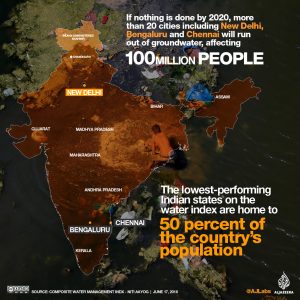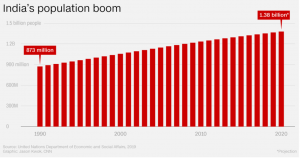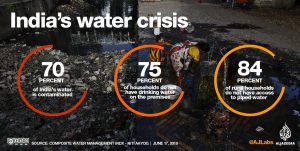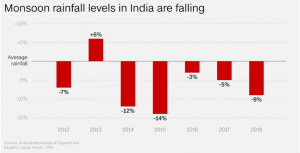Air quality in New Delhi has worsened in the last decade. According to a WHO survey, Delhi has the worst air quality as compared to other major cities around the world. The poisonous particulate matter of air in New Delhi is 440 pm which is 12 times worse than the recommended level of 35 pm. Air pollution is responsible for killing millions of people across India, from lung cancer, ischaemic heart disease, chronic obstructive pulmonary disease, acute lower respiratory infections, and diabetes. Air pollution in New Delhi is expected to reduce the life expectancy of its residents by 20 months and responsible for irreversible damage to the lungs of 50% of all children in the state.
Reason for Pollution
- Air quality worsens in the capital around this time of the year due to stubble burning when crops are being harvested.
- Around 60% of the population in India still use fossil and solid fuels to cook food, thus increasing the carbon dioxide level in the air.
- Firecrackers burnt on Diwali, known as the festival of lights also add to the increasing smog levels.
- New Delhi has a population of around 20 million people and carbon dioxide emissions from 8.8 million registered motor vehicles.
Current Situation
On 3rd Nov 2019, the air quality level climbed to a hazardous level and 37 flights were diverted from the New Delhi Airport due to poor visibility. New Delhi’s Chief Minister had to shut down schools due to the current hazardous air quality and announced that 5 million masks would be distributed to schoolchildren across the state. The government has given out temporary bans on construction activities and industrial plants to control the pollution level. Further, the government has implemented an odd-even scheme for cars under which vehicles with an odd number will not be allowed to drive on even dates of the month.
Next Steps to reduce air pollution
- Burning waste – Heavy fines should be imposed on people who burn garbage, tires, leaves and other wastes.
- Solar energy – Installation of solar panels at home should be encouraged and subsidies should be provided to residents.
- Carpooling- Congestion free lanes can be made for cars with three or four people to encourage people to carpool to work.

Group A- Simarbir Singh Dhaliwal






